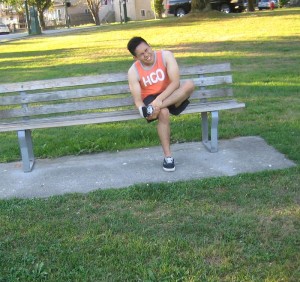A talus fracture involves a break in one of the small bones of the ankle, specifically the talus.
When engaged in certain activities such as landing from a jump or if the ankle is rolled, stress is applied on the talus bone. If the stress is excessive and beyond than what the bone can handle, damage to the bone can occur. Since great force is needed to damage the talus bone, the injury often occurs along with other injuries such as an ankle sprain or other types of fractures of the foot, lower leg or ankle.
What are the causes?
- A talus fracture typically occurs if an individual rolls his/her ankle especially when great weight bearing is involved.
- In some cases, the injury can occur after an awkward landing from a jump or falls from a significant height.
Abrupt, sharp ankle pain at the time of injury where the individual might limp. - Playing certain sports that involves jumping and running with directional changes such as soccer, football, netball, rugby and basketball
- Overuse due to an increase in the intensity or frequency in running.
What are the indications?
An individual with a talus fracture often experience the following:
- Abrupt, sharp ankle pain at the time of injury where the individual might limp
- Inability to bear weight if the talus is displaced
- Ankle pain, usually at the front can be felt but also in the sides or rear section of the ankle
- The signs might rapidly subside if the individual rests but there is an aching sensation at the site that becomes evident at night time or upon waking up in the morning.
- Evident swelling, bruising and discomfort if the affected area is firmly touched.
- Increased discomfort during certain movements of the ankle or foot or when walking or standing and attempting to walk or stand.
- Pins and needles sensation or numbness in the foot, ankle or toes
Management of a talus fracture
If a talus fracture is displaced, the treatment involves reduction that is followed by internal fixation to steady the injury. After surgery, the individual must wear a brace, protective boot, plaster cast and/or crutches for several weeks.
For a non-displaced talus fracture, the treatment involves crutches and/or a brace or protective boot. In some cases, plaster cast immobilization with crutches is an option that is followed by a brace or protective boot for several weeks.
More Information / Disclaimer
The information posted on this page on a talus fracture is for learning purposes only. Learn about the causes and how it is managed by taking a standard first aid course with Red Deer First Aid.

